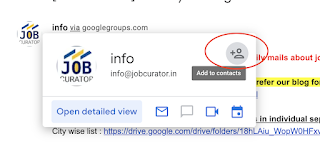Create Your Password Protected Folder
Before you get started you need to create a folder that will house
your password protected folder, this is just an ordinary folder and can
be located anywhere and named anything.
 Navigate into your newly created folder and create a new Text Document. This can easily be done from the context menu.
Navigate into your newly created folder and create a new Text Document. This can easily be done from the context menu.
 Open the document, now paste the following code into the contents of the document:
Open the document, now paste the following code into the contents of the document:
cls
@ECHO OFF
title Folder Private
if EXIST "HTG Locker" goto UNLOCK
if NOT EXIST Private goto MDLOCKER
:CONFIRM
echo Are you sure you want to lock the folder(Y/N)
set/p "cho=>"
if %cho%==Y goto LOCK
if %cho%==y goto LOCK
if %cho%==n goto END
if %cho%==N goto END
echo Invalid choice.
goto CONFIRM
:LOCK
ren Private "HTG Locker"
attrib +h +s "HTG Locker"
echo Folder locked
goto End
:UNLOCK
echo Enter password to unlock folder
set/p "pass=>"
if NOT %pass%== PASSWORD_GOES_HERE goto FAIL
attrib -h -s "HTG Locker"
ren "HTG Locker" Private
echo Folder Unlocked successfully
goto End
:FAIL
echo Invalid password
goto end
:MDLOCKER
md Private
echo Private created successfully
goto End
:End
Change the PASSWORD_GOES_HERE text to the password you want to set. Now go ahead and save the file as locker.bat.
 Once the file is saved as a batch file you can delete the original text file.
Once the file is saved as a batch file you can delete the original text file.
 Now run your batch file by double clicking on it–the first time you
run it, it will create a folder called Private. This is where you can
store all your secret things. When you have finished adding all your
stuff to the Private folder, run locker.bat again.
Now run your batch file by double clicking on it–the first time you
run it, it will create a folder called Private. This is where you can
store all your secret things. When you have finished adding all your
stuff to the Private folder, run locker.bat again.
 This time you will be asked if you sure that you want to lock the folder, press the “Y” key and hit enter to lock your folder.
This time you will be asked if you sure that you want to lock the folder, press the “Y” key and hit enter to lock your folder.
 You will see that your Private folder quickly disappears.
You will see that your Private folder quickly disappears.
 If you run the script yet again, you will prompted for a password.
If you run the script yet again, you will prompted for a password.
 If you enter the same password as you set in the script the Private
folder will reappear if you enter the incorrect password the script will
just Terminate.
If you enter the same password as you set in the script the Private
folder will reappear if you enter the incorrect password the script will
just Terminate.
How to See the Files Again
Most people don’t know how to show system files, but anybody who has
some experience will probably be able to quickly figure it out in the
Folder Options. To see the files again, all you have to do is uncheck
the boxes for “Show hidden files, folders, and drives” and uncheck the
box for “Hide protected operating system files”.
 But any ordinary user who unchecks the box will most probably be scared off by the warning message that appears.
But any ordinary user who unchecks the box will most probably be scared off by the warning message that appears.
 The second way someone could comprise the folder is to open the batch
file and read your password. It’s definitely not a really secure way to
hide your files, but it is fun.
Attribution note: We found this script on dozens of
different web sites going back many years. We have no idea who first
created the script, so we’ve omitted any sort of attribution link. If
you do have proof that you first created the script, contact us and
we’ll adjust the article accordingly.
The second way someone could comprise the folder is to open the batch
file and read your password. It’s definitely not a really secure way to
hide your files, but it is fun.
Attribution note: We found this script on dozens of
different web sites going back many years. We have no idea who first
created the script, so we’ve omitted any sort of attribution link. If
you do have proof that you first created the script, contact us and
we’ll adjust the article accordingly.
If You Forget Your Password
Seems like once a week somebody writes in asking how to figure out
the password they set. And the answer is really simple: Right-click on
the locker.bat file and choose Edit.
 Then you can see the password you set in the file.
Then you can see the password you set in the file.
